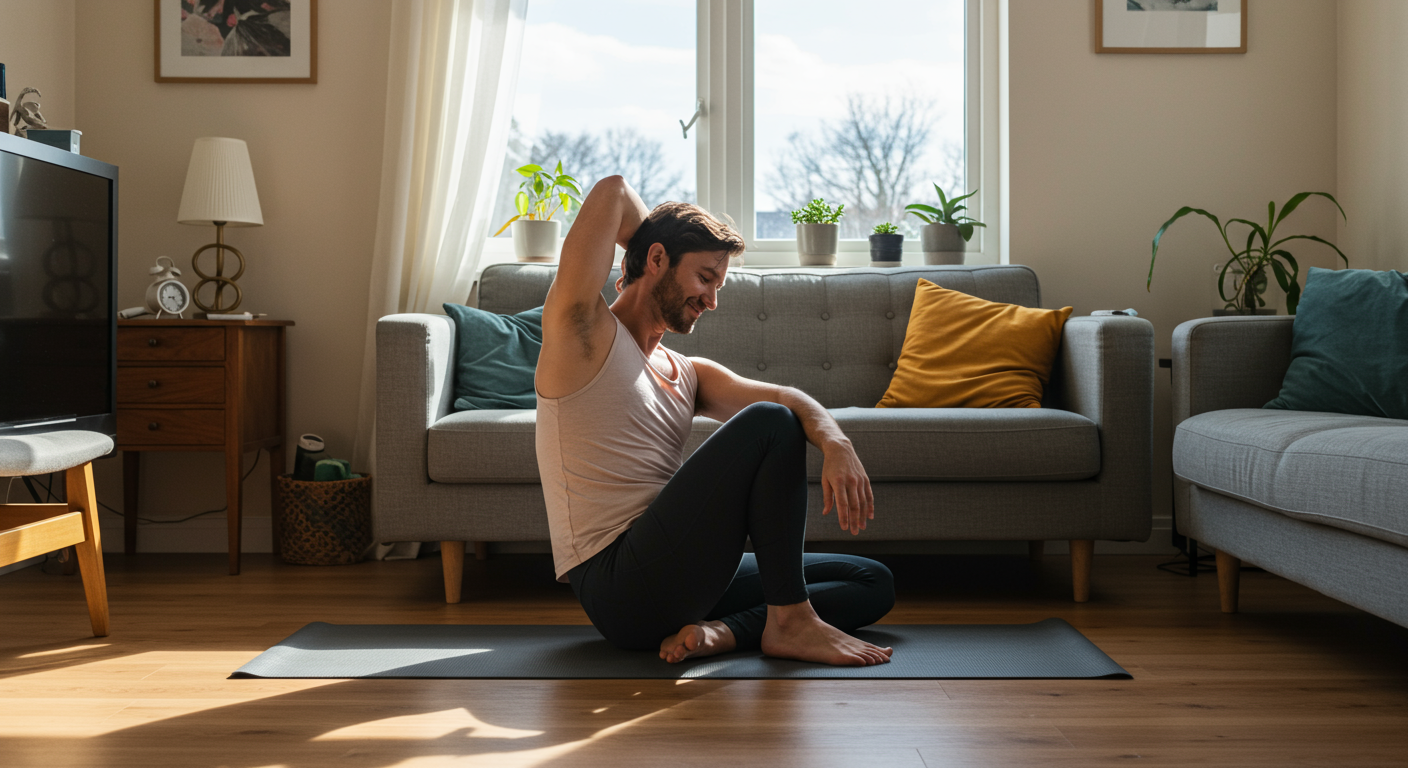Struggling with that uncomfortable feeling of bloating? Yoga can be a gentle yet powerful tool to improve your digestion and bring relief. This guide offers a simple, effective yoga routine you can do in the comfort of your own home. Perfect for desk workers and anyone seeking natural solutions for digestive health.

The Benefits of Yoga for Digestion at Home
Yoga is more than just stretching; it's a mind-body practice that can significantly aid digestion. Certain poses gently massage your abdominal organs, stimulating the digestive system and reducing bloating, gas, and constipation. Regular practice can also help manage stress, a common trigger for digestive issues. Plus, practicing at home means you can fit it into your busy schedule.
Essential Poses for Digestive Health
Here are five yoga poses to help alleviate bloating and promote healthy digestion. Remember to listen to your body and modify as needed.
Child's Pose (Balasana): Kneel on the floor with your knees hip-width apart (or wider, if that's more comfortable). Rest your torso on your thighs, and let your arms extend forward or rest at your sides. This pose gently massages the abdominal organs and calms the nervous system.
Wind-Relieving Pose (Pavanamuktasana): Lie on your back and draw your knees toward your chest. Gently hug your knees, bringing your thighs close to your abdomen. This pose helps to release trapped gas and relieve bloating.
Seated Spinal Twist (Ardha Matsyendrasana): Sit with your legs extended. Bend your right knee and place your foot on the outside of your left thigh. Twist your torso to the right, placing your left hand on your right knee and your right hand behind you for support. This twist stimulates digestion and detoxifies the body.
Cobra Pose (Bhujangasana): Lie on your stomach with your hands under your shoulders. Press into your hands to lift your chest off the floor, keeping your elbows close to your body. This pose stimulates the digestive organs and strengthens the back muscles.
Standing Forward Bend (Uttanasana): Stand with your feet hip-width apart. Bend forward from your hips, letting your head hang heavy. This pose stretches the entire back body and gently massages the abdominal organs.
Step-by-Step Routine
Follow this sequence for a 20-minute yoga flow:
- Start with 5 breaths in Child's Pose to center yourself.
- Hold Wind-Relieving Pose for 1 minute.
- Perform Seated Spinal Twist for 30 seconds on each side.
- Hold Cobra Pose for 30 seconds.
- Hold Standing Forward Bend for 30 seconds.
- Repeat the sequence 2-3 times, ending with Child's Pose.
Tips for Creating Your Home Yoga Space
Find a quiet, comfortable space in your home where you can practice without distractions. Consider using a Lululemon Yoga Mat to provide cushioning and support, and wear comfortable clothing that allows you to move freely. You may also find it helpful to light a candle or play calming music to enhance your practice.
Modifications for All Levels
- Beginners: Modify poses by using blocks for support or shortening the hold times.
- Those with back pain: Avoid deep twists or forward bends. Listen to your body and modify the poses to suit your needs.
- Pregnant women: Consult with a healthcare professional before starting any new exercise routine and modify poses as needed.
Connecting Mind and Body
Focus on your breath throughout your practice. Inhale deeply to expand your belly and exhale fully to release tension. This conscious connection with your breath will not only enhance your yoga experience but also help calm your mind and promote relaxation, further supporting healthy digestion.
Deepening Your Home Practice
To enhance your practice, consider using a yoga app, such as the Nike Training Club App, which offers a variety of guided yoga sessions. These apps provide structured routines and expert guidance, helping you deepen your understanding of yoga and its benefits. If you’re looking to improve your mindfulness, consider Headspace.
Next Steps: Making Yoga a Daily Habit
Commit to practicing yoga for digestion at least a few times per week. Consistency is key! Start with short sessions and gradually increase the duration as you feel comfortable. With regular practice, you'll notice a significant improvement in your digestion and overall well-being.